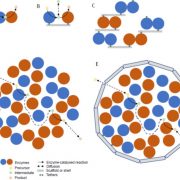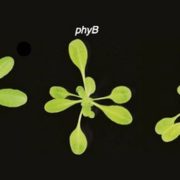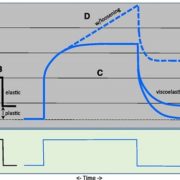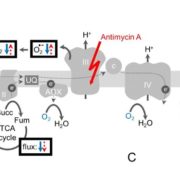
Update: Engineering of metabolic pathways using synthetic enzyme complexes
Blog, Plant Physiology, Plant Physiology: UpdatesBy Nicholas Smirnoff, University of Exeter. This article is part of the forthcoming Synthetic Biology focus issue.
Plants provide a source of enzymes for metabolic engineering to produce valuable or useful products in micro-organisms or can themselves be engineered (Andre et al., 2016; Vickery et…

Update: Genetic engineering, synthetic biology and the light reactions of photosynthesis
Blog, Plant Physiology, Plant Physiology: UpdatesBy Dario Leister
Applications of synthetic biology to photosynthesis currently range from exchanging photosynthetic proteins to the utilization of photosynthesis as a source of electrons for entirely unrelated reactions.
Oxygenic photosynthesis is imperfect and the evolutionarily conditioned patchwork…

Update: Cation/H+ transporters affect membrane trafficking
Plant Physiology, Plant Physiology: UpdatesBy Heven Sze and Salil Chanroj.
Plants remodel their cells through the dynamic endomembrane system. Intracellular pH is important for membrane trafficking, but the determinants of pH homeostasis are poorly defined in plants. Electrogenic proton (H+) pumps depend on counter-ion fluxes to establish…

Update: Phytochrome, Carbon Sensing, Metabolism, and Plant Growth Plasticity
Blog, Plant Physiology, Plant Physiology: UpdatesBy Johanna Krahmer, Ashwin Ganpudi, Ammad Abbas, Andrés Romanowski, and Karen J. Halliday
Plants continuously monitor fluctuations in their environment and actively adjust their metabolism to cope with variations in light and carbon resource availability. However, the links between photoreceptor signaling…

Update: Diffuse Growth of Plant Cell Walls
Blog, Plant Physiology, Plant Physiology: UpdatesBy Daniel Cosgrove
The primary wall of a growing cell is a versatile, subtle, and dynamic structure, with unique properties and functions in the life of the plant (Burton et al., 2010). When a cell grows, its wall stretches irreversibly as the cell enlarges in volume. Cells can start and stop this…

Update: The role of trehalose 6-phosphate in crop yield and resilience
Blog, Plant Physiology, Plant Physiology: UpdatesBy Matthew J. Paul, Asier Gonzalez-Uriarte, Cara A. Griffiths, and Keywan Hassani-Pak
Significant increases in global food security require improving crop yields in favourable and poor conditions alike. However, it is challenging to increase both the crop yield potential and yield resilience simultaneously,…

Update: Ethylene exerts species-specific and age-dependent control of photosynthesis
Blog, Plant Physiology, Plant Physiology: UpdatesBy Johan Ceuster and Bram Van de Poel
Abstract
The volatile plant hormone ethylene plays a regulatory role in many developmental processes and in biotic and abiotic stress responses. One of the under-explored actions of ethylene is its regulation of photosynthesis and associated components such…

Update: Monitoring Polysaccharide Dynamics in the Plant Cell Wall
Blog, Plant Physiology, Plant Physiology: UpdatesBy Catalin Voiniciuc, Markus Pauly, and Björn Usadel
All plant cells are surrounded by complex walls that play a role in growth and differentiation of tissues. Walls provide mechanical integrity and structure to each cell, and represent an interface with neighboring cells and the environment (Somerville…

Update: Mitochondrial energy signaling and its role in the low oxygen stress response of plants
Blog, Plant Physiology, Plant Physiology: Updates, Research, Research BlogBy Stephan Wagner, Olivier Van Aken, Marlene Elsässer, Markus Schwarzländer
Abstract
Cells of complex organisms typically rely on mitochondria for energy provision. The amount of energy required to sustain cellular activity can vary strongly depending on external conditions. Vice versa, constraints…

